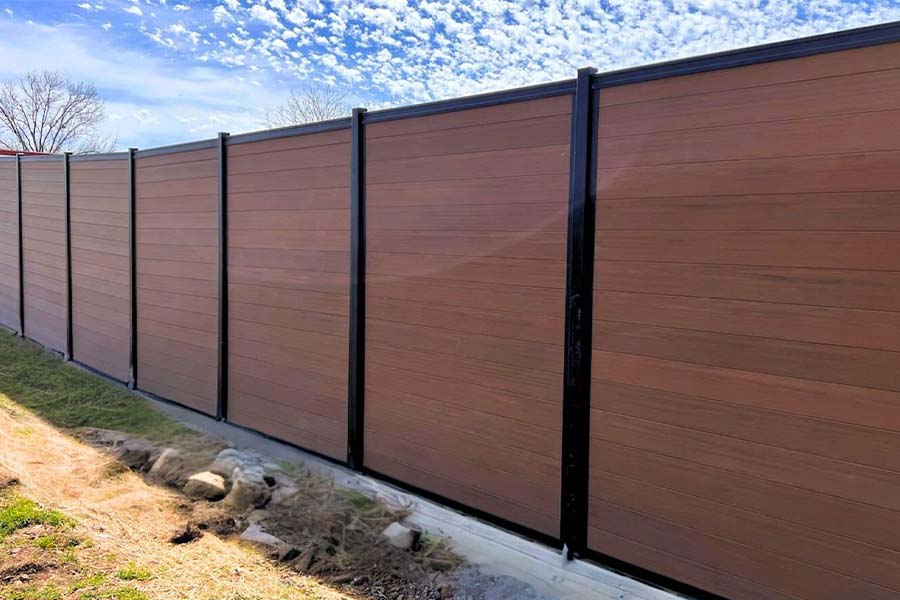All Categories
Featured
Setting up a fencing around your home is a terrific method to enhance safety, visual, and privacy charm. Nonetheless, the success of your fence setup depends mostly on exactly how well you prepare your building before the setup starts. Proper preparation can assist stop hold-ups, decrease costs, and ensure that the installment procedure goes efficiently. Below are some essential steps to follow when preparing your home for a fencing setup.
![]()
Furthermore, it is necessary to situate any type of below ground utilities, such as water lines, gas pipes, or electrical cables. Get in touch with your local energy business to mark the places of these below ground systems to stop any kind of damage during digging.
![]()
![]()
Verdict. Preparing your property for a fencing setup is an essential action that can save you time, cash, and migraines throughout the process. By investigating neighborhood regulations, recognizing property lines, clearing the setup area, ensuring gain access to for equipment, and completing your design, you can ensure a smooth installation. Taking these basic steps will help you accomplish a resilient and beautiful fence that boosts the personal privacy, safety and security, and look of your residential or commercial property.

- Research Resident Regulations and Permits. Prior to you start, make sure you inspect the neighborhood zoning legislations and obtain any required permits for your fencing setup. Lots of locations have certain guidelines on fence height, positioning, and material, and you might need a license to proceed.
- Identify Building Boundaries. Knowing the precise limits of your residential property is important to make certain the fence is mounted in the right location. Consider working with a specialist property surveyor if you do not have a clear understanding of where your residential property lines are. This will certainly help avoid any kind of infringements onto your neighbor's land and stay clear of prospective disagreements. Be sure to inspect if your next-door neighbors have any type of existing fences or structures near the residential or commercial property line that could affect the installation procedure.
- Clear the Installment Area. Eliminate any type of trees, bushes, rocks, and particles that could block the fence setup. If there is an existing fencing, you may need to dismantle it before the installation group shows up.
Furthermore, it is necessary to situate any type of below ground utilities, such as water lines, gas pipes, or electrical cables. Get in touch with your local energy business to mark the places of these below ground systems to stop any kind of damage during digging.
- Strategy for Accessibility to Your Residential property. During the installation procedure, your contractor might need heavy equipment to dig holes and relocate materials. Ensure that there is easy access to your residential property for installment vehicles and equipment. If you have a slim driveway or limited accessibility, inform your contractor in development so they can intend their method as necessary. This might include moving lorries, rearranging landscape design, or temporarily removing obstacles in the way.

- Review Your Fencing Style with Your Specialist. Prior to installment begins, you'll require to wrap up the design and materials for your fence. Go over the fence's purpose, such as whether you're seeking personal privacy, safety and security, or decor.
- Speak with Your Neighbors. If your fencing will be installed along a common building line, it's a great idea to notify your next-door neighbors ahead of time. You can discuss the kind of fencing you plan to install, the setup timetable, and any type of problems they might have.
- Prepare for Maintenance After Installment. Once your fencing is set up, there might be ongoing maintenance tasks depending on the material you have actually picked. Wood fencings may require to be stained or repainted to protect versus weathering, while vinyl fencings normally call for marginal maintenance.

Verdict. Preparing your property for a fencing setup is an essential action that can save you time, cash, and migraines throughout the process. By investigating neighborhood regulations, recognizing property lines, clearing the setup area, ensuring gain access to for equipment, and completing your design, you can ensure a smooth installation. Taking these basic steps will help you accomplish a resilient and beautiful fence that boosts the personal privacy, safety and security, and look of your residential or commercial property.
Latest Posts
Learn About Auto Services & More: Full Services Guide from Montclare Auto Repair
Published May 28, 25
1 min read
Explore the Best Auto Repair Deals in Montclare, Chicago
Published May 25, 25
1 min read
Discover WyHy FCU – Top Benefits for Your Money Goals
Published May 23, 25
1 min read
More
Latest Posts
Learn About Auto Services & More: Full Services Guide from Montclare Auto Repair
Published May 28, 25
1 min read
Explore the Best Auto Repair Deals in Montclare, Chicago
Published May 25, 25
1 min read
Discover WyHy FCU – Top Benefits for Your Money Goals
Published May 23, 25
1 min read